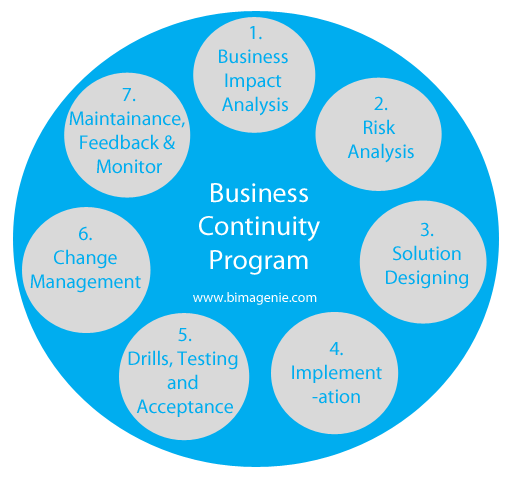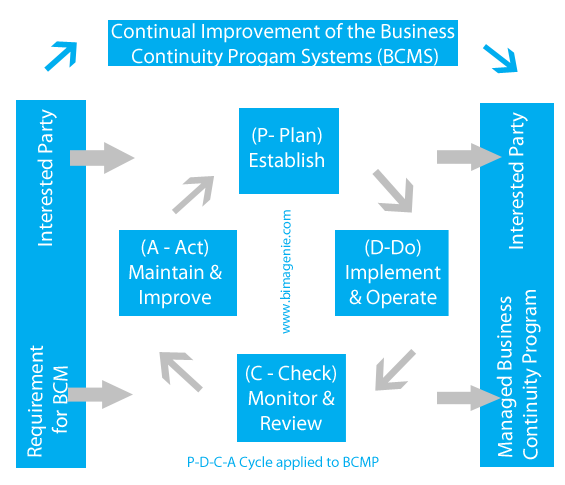Business Continuity Management
"Every year nearly one in five businesses suffers a major disruption, which causes loss and planning to deal with those disruptions is widely regarded as good business sense. Effective business continuity planning is critical to ensuring that the essential functions of your business can carry on despite an emergency.
Business Continuity Management (BCM) identifies and evaluates potential risks to an enterprise and develops the enterprise's resilience by ensuring critical objectives are met and the resources necessary to achieve those objectives are available. These risks, may include emergencies, crises, disasters, or incidents that disrupt normal business activity. In the case of an adverse event which has negative consequences, BCM ensures an effective response to minimize losses and restore regular operations. The procedures that are put into place are set against each risk and should be planned beforehand and if necessary practised to see if they work.

Business Continuity can be broken down into two elements, planning and management. All of the plans should be documented in a Business Continuity Plan (BCP), which breaks down all of the procedures to be executed. The BCP should be reviewed annually to ensure that the enterprise is prepared for any new risks that have materialised, possibly due to Political, Economic, Sociological, Technological, Legal and Environmental events.
Risk Management team of BimaGenieTM implement Business Continuity Management as per principle and guidelines of ISO 22301 the international standard for Business Continuity Management. The standard applies the ‘Plan-Do-Check-Act’ (PDCA) cycle to planning, establishing, implementing, operating, monitoring, reviewing, maintaining and continually improving the effectiveness of an organization’s BCMS.







